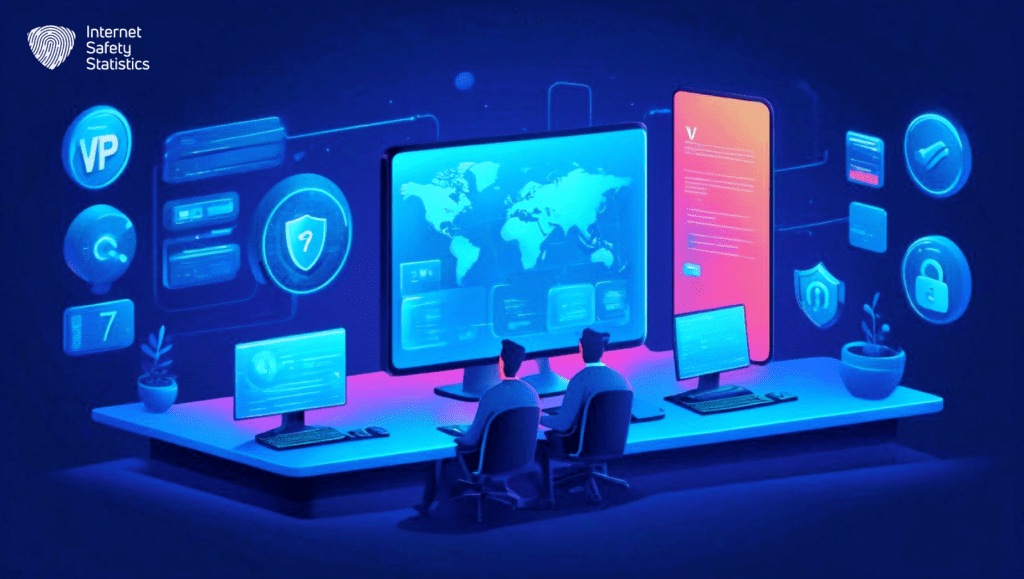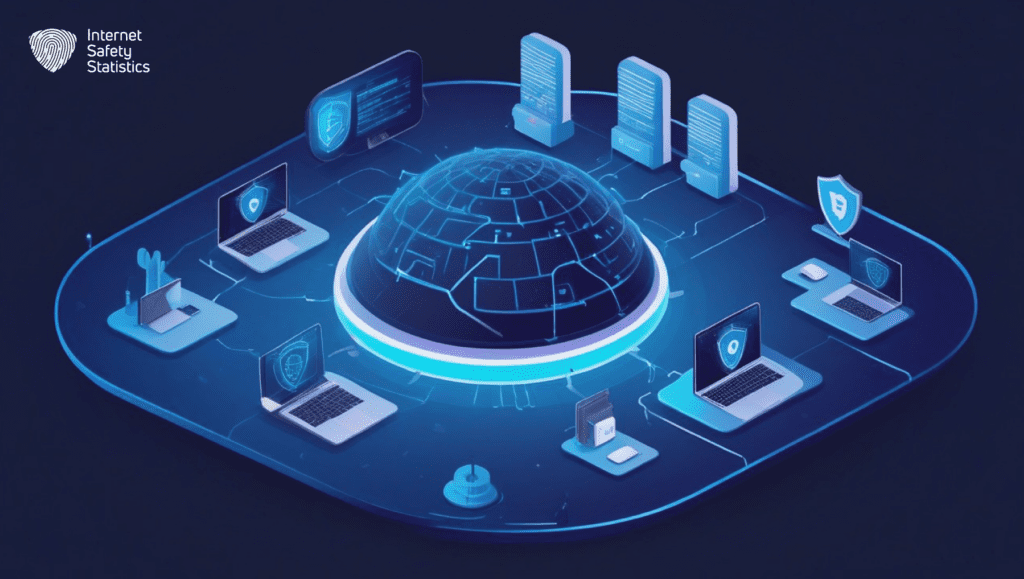
A cybersecurity plan serves as the foundation for a business’s cybersecurity strategy, providing a roadmap for identifying, assessing, and mitigating potential cyber threats. In today’s interconnected and data-driven world, this crucial plan helps organisations safeguard their sensitive data, critical infrastructure, and reputation from an ever-growing array of cyber threats. By outlining specific security controls and procedures, a cybersecurity plan ensures that businesses have the necessary measures in place to protect their systems and data.
Defining the Importance of Cybersecurity Planning for Businesses
Cybersecurity planning is the cornerstone of effective cybersecurity management. It serves as a roadmap for identifying, assessing, and mitigating potential cyber threats, ensuring that organisations are well-equipped to protect their valuable assets. A well-crafted cybersecurity plan provides businesses with the following benefits:
- Increased Proactiveness: Cybersecurity planning shifts the focus from reactive measures to proactive risk mitigation. By identifying potential threats and vulnerabilities early on, organisations can take steps to prevent or minimise the impact of cyberattacks.
- Enhanced Security Posture: A comprehensive cybersecurity plan outlines specific security controls and procedures, ensuring that organisations have the necessary measures in place to safeguard their systems and data. This standardised approach helps to reinforce overall security posture and minimise the risk of breaches.
- Improved Decision-Making: Cybersecurity planning provides businesses with a framework for making informed decisions about resource allocation, technology investments, and training initiatives. This informed approach helps to optimise cybersecurity efforts and allocate resources effectively.
- Enhanced Compliance: Cybersecurity plans can serve as a valuable tool for ensuring compliance with industry regulations and data privacy laws. This compliance can help to protect businesses from legal risks and maintain customer trust.
The Current Cyber Threat Landscape

The cyber threat landscape is constantly evolving, with new and sophisticated threats emerging all the time. In 2023, organisations are facing a wide range of cyber threats, including:
- Ransomware: This type of malware encrypts files on a victim’s computer and demands a ransom payment in order to decrypt them. Ransomware attacks can be devastating to businesses, as they can disrupt operations, damage data, and lead to financial losses.
- Phishing: This is a social engineering attack that involves tricking users into clicking on malicious links or opening infected attachments. Phishing attacks are often used to steal login credentials, credit card information, or other sensitive data.
- Zero-day attacks: These are attacks that exploit newly discovered vulnerabilities in software or systems before patches are available. Zero-day attacks are often highly sophisticated and difficult to defend against.
- Supply chain attacks: These attacks target the suppliers and partners of organisations in order to breach their defences and gain access to their networks. Supply chain attacks can be particularly difficult to detect, as they often involve multiple points of entry.
- IoT attacks: As the Internet of Things (IoT) expands, so does the number of potential attack vectors. IoT devices are often poorly secured, making them easy targets for attackers.
Analysis of Prevalent Cyber Threats and Attack Vectors
In 2023, ransomware remains the most prevalent cyber threat, accounting for over 60% of all cyberattacks. Phishing is also a major concern, with over 90% of organisations reporting that they have been targeted by phishing attacks. Zero-day attacks and supply chain attacks are also on the rise as attackers become more sophisticated and seek to exploit new vulnerabilities.
Recent Trends and Emerging Threats in the Cybersecurity Landscape
Several recent trends are shaping the cybersecurity landscape. These trends include:
- The increasing use of artificial intelligence (AI) and machine learning (ML) by attackers: AI and ML are being used to automate attacks, make them more targeted, and evade detection.
- The rise of ransomware-as-a-service (RaaS): RaaS platforms make it easier for attackers to launch ransomware attacks without having to develop their own malware.
- The increasing use of cloud computing: As businesses move more of their operations to the cloud, they are exposed to new security risks.
- The increasing use of mobile devices: Mobile devices are increasingly being used for business purposes, making them a target for attackers.
In addition to these trends, there are a number of emerging threats that organisations need to be aware of. These include:
- Sophisticated malware that can evade traditional security measures.
- Attacks that target critical infrastructure, such as power grids and transportation systems.
- The use of deepfakes to spread misinformation and disinformation.
- The use of quantum computing to break current encryption methods.
Recommendations for Addressing the Cyber Threat Landscape
Organisations need to take a number of steps to address the growing cyber threat landscape. These steps include:
- Developing and implementing a comprehensive cybersecurity plan.
- Keeping software and systems up to date with the latest security patches.
- Training employees on cybersecurity best practices.
- Using multi-factor authentication (MFA) for all user accounts.
- Implementing data loss prevention (DLP) solutions.
- Conducting regular security audits.
- Partnering with a cybersecurity service provider (MSSP).
By taking these steps, organisations can help to protect themselves from the latest cyber threats and maintain the safety of their data and systems.
Elements of a Robust Cybersecurity Plan
A robust cybersecurity plan is essential for protecting an organisation’s valuable assets from cyber threats. It provides a framework for identifying, assessing, and mitigating potential vulnerabilities, ensuring that businesses have the necessary measures in place to safeguard their systems and data.
Key Elements of a Robust Cybersecurity Plan:
- Risk Assessment and Identification: A thorough risk assessment is the foundation of a comprehensive cybersecurity plan. It involves identifying and evaluating potential vulnerabilities within an organisation’s systems, networks, and data, considering both internal and external threats. This assessment helps organisations prioritise security investments and allocate resources effectively.
- Policy and Procedures: Establishing clear and comprehensive security policies and procedures is crucial for guiding employees’ behaviour and ensuring consistent adherence to security best practices. These policies should cover topics such as password management, data handling, remote access, and social engineering.
- Access Control and Identity Management: Implementing robust access control and identity management solutions is essential for preventing unauthorised access to sensitive information and systems. This includes using strong authentication methods, such as multi-factor authentication (MFA), and managing user access permissions carefully.
- Secure Network and Endpoint Protection: Protecting the organisation’s network and endpoints from cyberattacks is paramount. This includes using firewalls, intrusion detection systems (IDS), intrusion prevention systems (IPS), and endpoint security software to detect and mitigate threats.
- Data Encryption and Security: Encrypting sensitive data at rest, in transit, and in use is essential to protect it from unauthorised access and disclosure. This includes using strong encryption algorithms and storing encrypted data securely.
- Regular Security Patching and Updates: Keeping software and operating systems up to date with the latest security patches and updates is crucial to address vulnerabilities and protect against newly discovered threats. This ensures that the organisation’s systems and software are protected against the latest attacks.
- Security Awareness Training and Education: Employees are often the weakest link in an organisation’s security posture. Providing regular security awareness training to educate employees about cyber threats, phishing scams, and social engineering techniques is essential to prevent human error from leading to cyberattacks.
- Incident Response Plan and Capability: Establishing a comprehensive incident response plan is critical for effectively responding to and recovering from cyberattacks. This plan should outline procedures for detecting, containing, investigating, and remediating security incidents, ensuring that the organisation can minimise the impact of cyberattacks.
- Third-Party Risk Management: Third-party vendors and partners can introduce additional security risks. Conducting thorough due diligence on vendors, implementing strong contractual agreements, and monitoring their security posture are essential to mitigate these risks.
- Continuous Monitoring and Threat Intelligence: Continuously monitoring network activity, system logs, and security alerts is crucial for detecting and responding to emerging threats promptly. Leveraging threat intelligence from reputable sources can help organisations stay ahead of the latest attack trends and vulnerabilities.
- Regular Review and Updates: Cybersecurity threats and attack vectors evolve constantly, making it crucial to review and update the cybersecurity plan regularly. Regularly reassessing risks and vulnerabilities, evaluating security controls, and integrating new technologies are essential for maintaining an effective cybersecurity posture.
Data Protection Measures

data is a valuable asset that needs to be protected from unauthorised access, use, disclosure, disruption, modification, or destruction. Data protection measures are essential to safeguard the confidentiality, integrity, and availability of data.
Encryption and Data Masking Techniques for Sensitive Information
Encryption is the process of converting data into an unreadable format using a mathematical algorithm. This makes it impossible for unauthorised individuals to access or understand the data. Data masking is a technique for obscuring sensitive information in a database or file. This makes it difficult for unauthorised individuals to identify and exploit sensitive data.
Examples of Encryption and Data Masking Techniques:
- Full disk encryption: This encrypts all data on a hard drive, including the operating system and user files.
- File-level encryption: This encrypts specific files or folders, such as sensitive documents or financial records.
- Database encryption: This encrypts sensitive data stored in a database, such as customer information or credit card numbers.
- Data masking: This can be used to mask sensitive fields in databases, such as social security numbers or phone numbers, with placeholder values.
Data Backup and Recovery Strategies to Prevent Data Loss
Data loss can occur from a variety of causes, such as hardware failure, software malfunction, or cyberattacks. Data backup and recovery strategies are essential to ensure that data can be restored in the event of data loss.
Examples of Data Backup and Recovery Strategies:
- Regular backups: Data should be backed up regularly to an offsite location to protect it from physical damage or destruction.
- Differential backups: Only changes to data since the last full backup are backed up. This reduces the amount of data that needs to be backed up and restored.
- Incremental backups: Only changes to data since the last incremental backup are backed up. This is the most efficient form of backup, but it requires the most recent incremental backup to restore the data.
Recovery strategies:
- Disaster recovery plan: This plan outlines the steps that will be taken to restore data in the event of a disaster, such as a natural disaster or cyberattack.
- Backup rotation: Backups should be rotated regularly to ensure that there is always a recent backup available.
- Data retention policies: Data should be retained for a specified period of time to comply with legal and regulatory requirements.
By implementing strong encryption and data masking techniques, along with effective data backup and recovery strategies, organisations can significantly reduce their risk of data loss and protect their valuable assets.
Network and Endpoint Security

organisations are facing a growing number of cyber threats that can exploit vulnerabilities in their networks and endpoints. Network and endpoint security are essential to protect organisations from these threats and ensure the confidentiality, integrity, and availability of sensitive data.
Firewall Implementation and Network Segmentation Strategies
Firewalls are security devices that act as gatekeepers, controlling the flow of traffic between networks and the internet. By implementing firewalls, organisations can restrict unauthorised access to their networks and protect them from malicious attacks.
- Types of Firewalls:
- Network Firewalls: These firewalls protect external networks from unauthorised access.
- Web Application Firewalls (WAFs): These firewalls protect web applications from malicious attacks.
- Next-Generation Firewalls (NGFWs): These firewalls combine network and application security capabilities.
- Network Segmentation:
- Segmentation: This is the process of dividing a network into smaller, more manageable segments. This can help to isolate sensitive data and resources from the rest of the network, making it more difficult for attackers to spread malware or gain unauthorised access.
- VLANs (Virtual Local Area Networks): These are logical networks that can be used to segment traffic within a physical network.
- Microsegmentation: This is a more granular approach to segmentation that uses security policies to control access to specific resources on a network.
Endpoint Security Solutions: Antivirus, Anti-malware, and Intrusion Detection
Endpoint security solutions protect individual devices from malicious software, such as viruses, worms, Trojan horses, and spyware. These solutions can also help to detect and prevent intrusions, such as unauthorised access to a device or network.
- Antivirus Software: This software scans files and programs for known viruses and malware. Antivirus software can also quarantine or remove infected files.
- Anti-malware Software: This software scans files and programs for a wider range of malicious software, including spyware, adware, and ransomware.
- Intrusion Detection Software (IDS): This software monitors network traffic for suspicious activity. If IDS software detects suspicious activity, it can alert administrators or take action to block the activity.
- Intrusion Prevention Software (IPS): This software goes a step further than IDS by not only detecting suspicious activity but also taking action to block it.
By implementing strong firewall and network segmentation strategies, along with comprehensive endpoint security solutions, organisations can significantly reduce their risk of network and endpoint attacks.
Compliance and Regulatory Considerations
organisations are subject to a growing number of cybersecurity regulations and industry standards. These regulations and standards are designed to protect sensitive data and ensure that organisations are accountable for their cybersecurity practices.
Aligning Cybersecurity Plans with Industry Standards and Regulations
Organisations must align their cybersecurity plans with the relevant industry standards and regulations in their jurisdiction. This includes:
- Understanding the requirements of the specific regulations and standards.
- Implementing the necessary controls and procedures to meet the requirements.
- Conducting regular assessments to ensure compliance.
Impact of GDPR, HIPAA, or Other Relevant Compliance Frameworks
Some of the most prominent compliance frameworks include:
- General Data Protection Regulation (GDPR): This European Union regulation applies to organisations that process the personal data of individuals in the EU.
- Health Insurance Portability and Accountability Act (HIPAA): This US regulation applies to organisations that handle health information.
- Payment Card Industry Data Security Standard (PCI DSS): This industry standard applies to organisations that handle credit card data.
Compliance with these frameworks can have a significant impact on an organisation’s cybersecurity posture. For example, organisations may need to invest in new technologies, implement stricter access controls, and enhance their incident response capabilities.
Additional Compliance Considerations
Organisations should also consider other compliance requirements that may apply to them, such as:
- Sarbanes-Oxley Act (SOX): This US law applies to publicly traded companies and requires them to maintain adequate internal controls.
- Control Objectives for Information and Related Technology (CobiT): This framework provides a set of best practices for IT governance and security.
- ISO/IEC 27001: This international standard provides a framework for information security management systems.
By understanding and complying with the relevant cybersecurity regulations and industry standards, organisations can reduce their risk of data breaches and protect their valuable assets. Additionally, compliance can help organisations maintain their reputation and avoid legal and financial penalties.
In conclusion, a robust cybersecurity plan is essential for organisations to protect their valuable assets, maintain business continuity, and comply with relevant regulations. A comprehensive cybersecurity plan should encompass a wide range of elements, including risk assessment and identification, policy and procedures, access control and identity management, secure network and endpoint protection, data protection measures, compliance and regulatory considerations, incident response and recovery, and continuous monitoring and threat intelligence.
